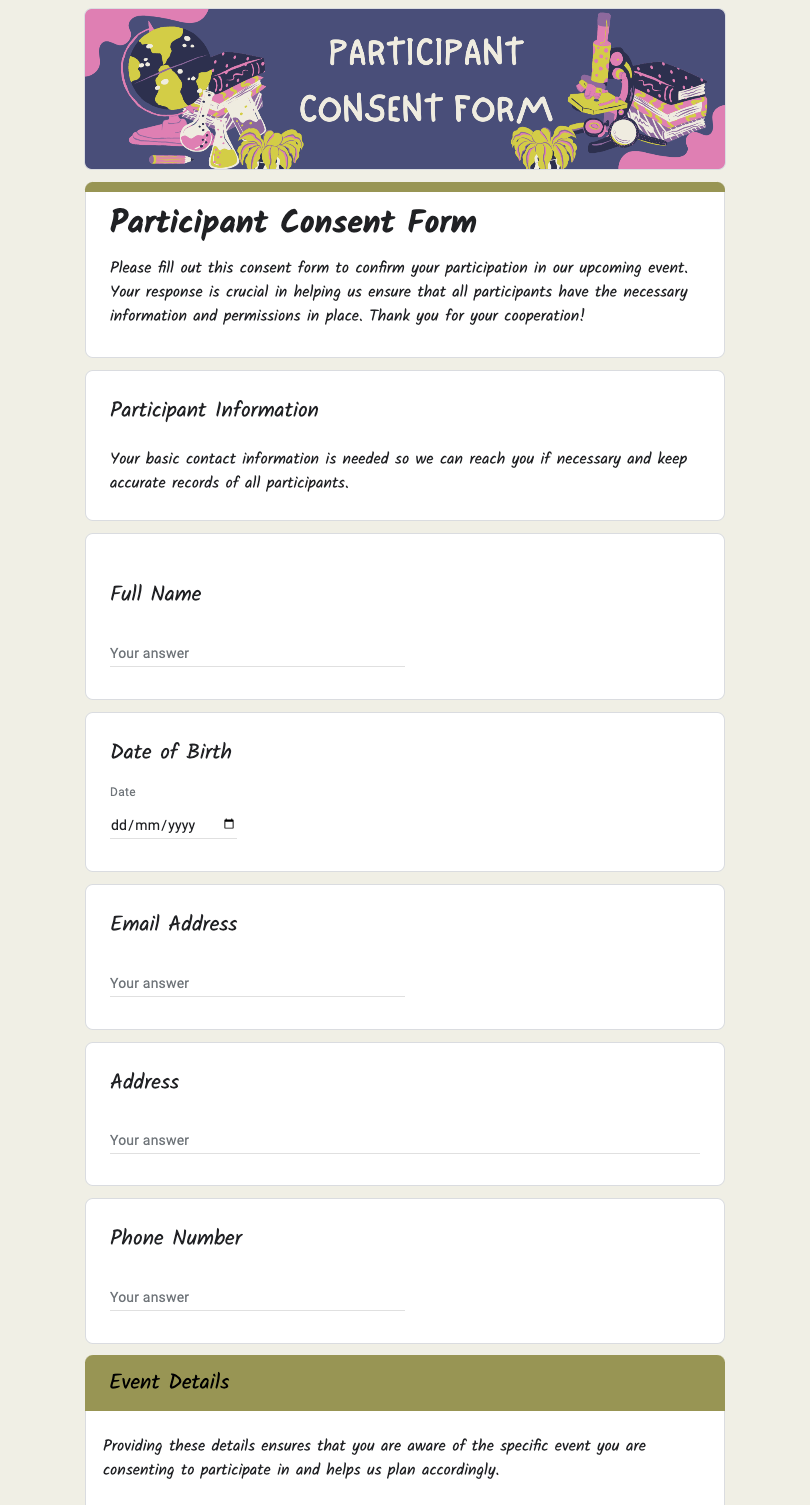Participant Consent Form
FREE
A Participant Consent Form ensures that all participants clearly understand the nature, purpose, and potential risks of an activity or event before agreeing to take part. By using this form, you protect both the organizers and the participants by fostering transparency and building trust. It allows participants to make informed decisions, ensuring that they are fully aware of what to expect. Encouraging the use of this form helps to create a safe and respectful environment, where everyone involved has acknowledged and agreed to the terms, ultimately leading to a smoother, more successful event.



